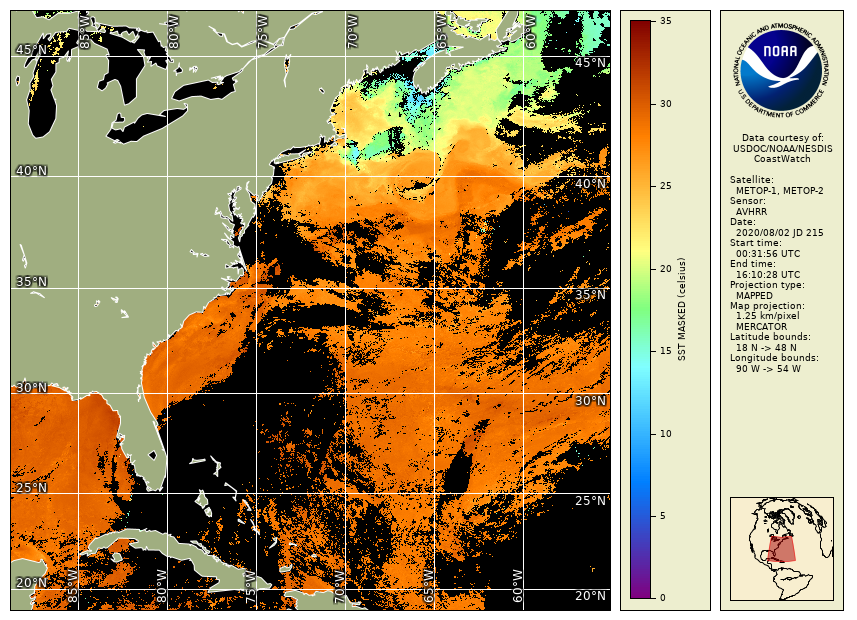
|
|
Sea surface temperature (SST) along the U.S. East Coast,
measured by the Advanced Very High Resolution Radiometer (AVHRR)
sensor onboard the Metop satellites on August 2, 2020. Credit:
NOAA CoastWatch/OceanWatch.
Click the image to view a larger version.
|

|
|
Referring back to our earlier discussion of the
electromagnetic spectrum,
there is a certain band of energy that our eyes can detect, called visible light.
Just beyond the red end of that range, at slightly lower energy (longer wavelength)
than what our eyes can see, is a section called the infrared. Our bodies can detect
some of the more moderate wavelengths of
infrared.
If you stand next to a wood fire, you feel "heat" radiating from the flames.
This is actually the infrared radiation emitted by the burning wood.
As we mentioned in the Intro to Remote Sensing portion of this chapter,
the environmental satellites that NOAA and its partners operate are equipped with instruments
(or sensors), which are carefully calibrated to measure infrared radiation.
These include the Geostationary Operational Environmental Satellite (GOES)-East
Advanced Baseline Imager (ABI);
GOES-West ABI;
Meteosat Second Generation (MSG)
Spinning Enhanced Visible and Infrared Imager (SEVIRI);
Himawari-8 Advanced Himawari Imager (AHI);
NOAA-20 Polar Operational Environmental Satellites (POES)
Advanced Very High Resolution Radiometer (AVHRR);
Metop-B AVHRR;
and the Suomi National Polar-Orbiting Partnership (S-NPP)
Visible Infrared Imaging Radiometer Suite (VIIRS).
These sensors are basically "feeling" the heat that radiates from the ocean surface,
even though they fly hundreds to thousands of miles above the ocean.
This allows them to provide us with a measure of SST.
(top)
